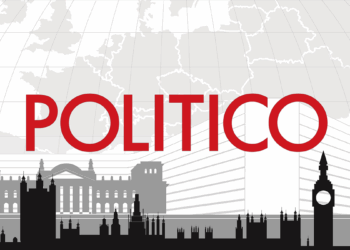Andrew here. We’ve got a probable new Fed governor — at least on a temporary basis. We dive into what President Trump’s pick means for interest rates, Jay Powell and more. Meanwhile, OpenAI released its latest A.I. model, upgrading ChatGPT along the way. (I’ve been playing with it and it is quite something — try it if you can.) And speaking of A.I., we’ve got some creative hacks that a financial C.E.O. has been using.
Trump’s new man at the Fed
President Trump’s announcement that he would nominate Stephen Miran, a former hedge fund executive turned top economic adviser, to temporarily fill a vacancy at the Fed puts the White House a step closer to reshaping the central bank.
If confirmed by the Senate, Miran would get a key vote on interest-rate policy, putting more pressure on the current Fed chair, Jay Powell, to lower borrowing costs even as concerns grow about the inflationary effects of Trump’s tariffs.
The market response to Miran was swift. The dollar fell again on Friday against a basket of currencies. His nomination “raises another red flag of risk on U.S. assets” and could rekindle concerns about the so-called sell America trade, Richard Cochinos, a foreign exchange strategist at RBC Capital Markets, wrote in a research note on Thursday.
And futures traders now anticipate two or three rate cuts this year, with the first coming at the next meeting in September.
What’s worrying investors:
-
Miran has championed Trump’s economic vision, arguing — contrary to many mainstream economists — that Trump’s tariffs are a deflationary tool that will boost growth. And Miran has called for higher tariffs and weakening the greenback to bolster American competitiveness and revive domestic manufacturing.
-
Last year, Miran co-wrote a report for the Manhattan Institute, a right-leaning think tank, that essentially called for the end of Fed independence. He recommended shortening terms of Fed governors to eight years, from 14 years, and that the president should have the power to remove them sooner.
The appointment increases pressure on the Fed’s political independence. The central bank’s relative freedom from government interference is seen as a kind of North Star for global investors. It was reinforced this spring by the Supreme Court, in the face of Trump’s repeated grumbling that he would like to fire Powell.
Thank you for your patience while we verify access. If you are in Reader mode please exit and log into your Times account, or subscribe for all of The Times.
Thank you for your patience while we verify access.
Already a subscriber? Log in.
Want all of The Times? Subscribe.
The post What a Trump Loyalist at the Fed May Mean for Markets appeared first on New York Times.




